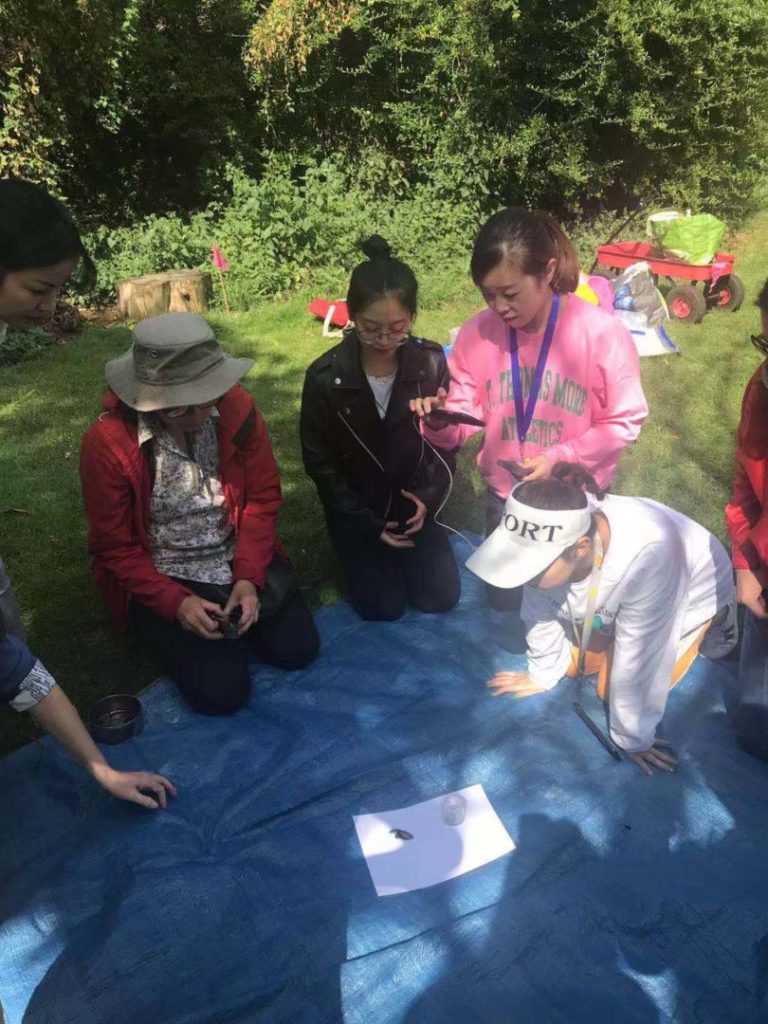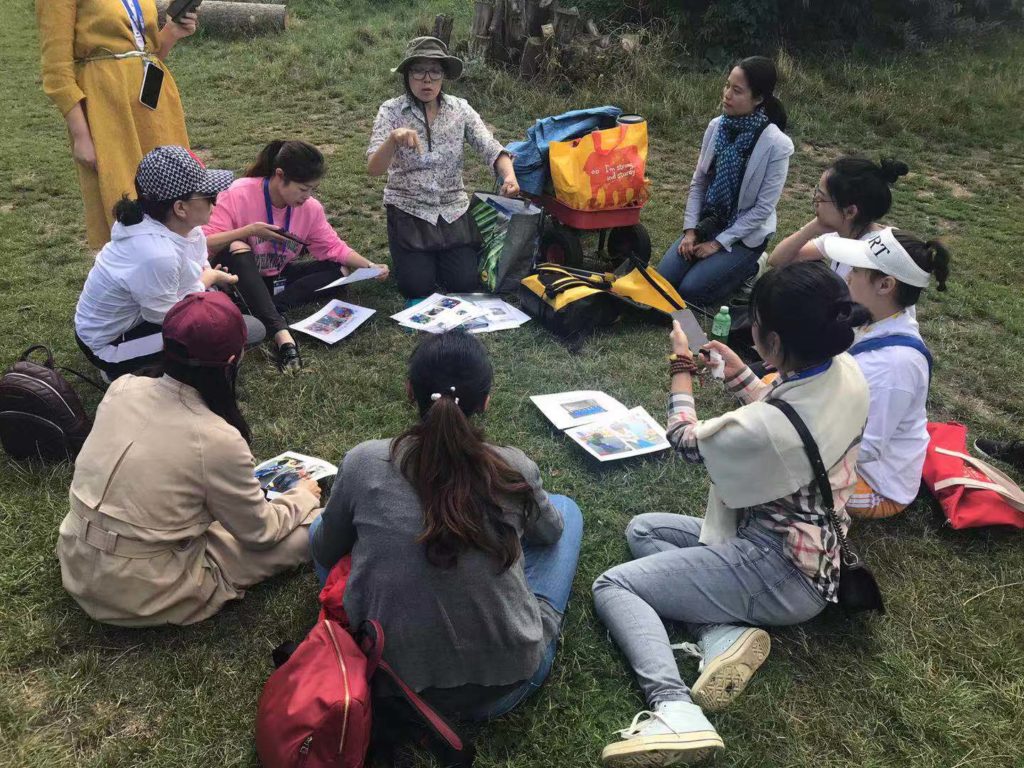On the second training day of the BIEA’s UK summer study tour, the participants were taken on an immersive forest education curriculum experience. Under the leadership of Ingrid Chen, a forest teaching expert with 5 years’ worth of experience in forest schooling, the participants were given an opportunity to explore, observe, and discover nature. Ingrid Chen mentioned “we want to involve children in forest schools, so teachers must first learn to enjoy nature and care for the environment”. In today’s forest school experience, fellow teachers and Ingrid Chen shared the basic activities with taken in forest schools through demonstration in different locations such as parks and nature reserves, allowing the development of rule awareness and risk assessment of outdoor activities within the participants. The teachers were truly aware of the joys in exploring nature and the teaching philosophy centred around children.
The participants had a simulated forest education lesson in Ion Square Forest School area:
- Risk assessment: Adults should first look at the environment and try to remove or mark potential risk factors such as glass shards and animal waste. Teachers should then use flags to define and distinguish safety boundaries where children could easily be observed.
- Teaching rules: No pick, no lick – Don’t let children pick up foreign objects, and especially don’t let them put foreign objects in their mouth.
- One two three, base camping – When 123 is said out loud the children should return to base camp.
Forest education activities:
- Treasure hunting
Ask the children to explore the environment freely and find treasures that they like, such as animal feathers, dead branches, leaves and so on. This is usually the first activity partaken in forest education, which allows children to get acquainted with the environment and develop a deep understanding of the rules. Based on the child’s ability and needs, it can be extended to create routines and to play games with other children, reinforcing the character within the child.
- Mud kitchen

Firstly, locate a suitable soil area and then provide the children with some containers and water buckets, allowing them to play and make a mess. When the teacher observes the children playing, they will find that some children like to make mud cakes, some children may like to use wooden sticks to make a mark in the mud, or some children like to look for small bugs in the wet mud and so on. According to the children’s interests and needs, the teacher will provide corresponding materials in the following forest activities as further support for the children’s exploration journey, which is in line with the concepts advocated within the EYFS framework – continuous provision:
a. Bug hunting
The child will search for an insect in the mud and place it into a container. The lid of the container is designed to resemble a magnifying glass, this allows the child to observe the characteristics of the insect and learn basic entomology. The study tour participants participated within the activity and collected the insects they discovered and discussed their findings with each other.
b. Cloud marking
Ingrid demonstrated the activity of marking clouds, she laid down on the grass and observed the shape of the clouds in the sky. Ingrid then proceeded to draw the clouds on a piece of paper using a pencil. Ingrid shared with the participants that the forest school instruction manual was written by her, including; pre-preparation for forest education courses, children’s dress code, risk assessment form, forest school activity plan, emergency plan, and forest school information for parents. Ingrid Chen mentioned that by nature the forest school initiative promotes conversation and the important roles humans play in careful balance of ecology.
Here were some frequently asked questions by the participants:
Q: What if a child uses the tools given as a weapon to fight other students during outdoor activities?
A: Firstly, teacher should introduce the correct usage of the tools and the precautions the children must follow if they wish to use the tools. In the process of children using tools, teachers should promptly encourage and praise the positive behaviour of children to reduce the occurrence of some negative behavioural patterns that might occur. Although sometimes the danger occurs, the teacher role is to always observe the children and prevent conflict before it happens. The teacher might say “stop” but the they should avoid using the negative expression to increase learning through negative reinforcement.
Q: Whilst searching for insects, the teacher and the children exchanged discussions about finding insects. What if an insect was found that the teacher was unaware of?
A: This happens very often. We will usually discuss with the children “what are you looking for? Where did you find it? What do you think it looks like?”. Teachers, like children, are all explorers who are curious about nature. Our interest in nature does not mean that we must become knowledgeable entomologists or scientists. The most important thing is the process of exploration and inspiring children’s curiosity about nature. How the child is really interested in an insect will allow the child to develop their own understanding of it, but they may also ask the teacher questions. Therefore, it would be advantageous to the teacher if they prepared some books about insects and plants prior, but these should only be for the older children or children who have a particularly strong desire for knowledge.




